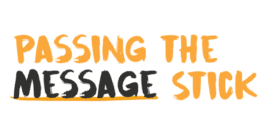Why our brains don’t register social issues like climate change – and how neuroscience campaigning could change that

6 May 2020 at 5:03 pm
Smart advocacy organisations are learning to understand framing and this is having a huge impact on political issues and government advocacy in Australia, writes Neil Pharaoh.
Why is it that some causes and campaigns capture public attention, empower people and grow sustained movements while others fizzle by the side of the road? The answer might be neuroscience – which normally wouldn’t be my field of expertise. But as we are increasingly seeing this science bleed into political campaigns globally, if it isn’t already in Australia, it soon will be.
To understand the concept of neuroscience-based campaigning, we need to rewind a little to the concept of messaging “framing”. Framing (in its simplest form) is how you couch an issue, argument or a debate. Framing is why same-sex marriage became “marriage equality” to progressives and “freedom to marry” to conservatives. Both variants wanted the same thing but couched the term very differently, and they both had different connotations to the terms “same sex marriage” or “gay marriage”.
The argument is: how you frame an issue will set the tone of the debate, and anything after that becomes semantics. So, what does this have to do with climate change and other progressive causes?
A little under a year ago, a company called Spark Neuro Science undertook some research into environmental advocacy in the US. Their premise was that there was a core of people who just didn’t buy “climate change”, around one third of the US population, in fact. But if you changed the framing, could you change their views? Spark used millisecond electroencephalography (EEG) and galvanic skin responses (GSR) on a statistically significant population of both progressive and conservative voters, to come up with an emotional intensity measure of response. The result? The terms “global warming” and “climate change” didn’t swing a voter or illicit the emotional response necessary for them to vote or undertake change for it. But “climate crisis” and “environmental destruction” did.
The takeaway point was that a successful political candidate or movement must broaden the conversation around an issue with words that spark interest for both ends of the political spectrum, while avoiding overstating the problem. In short, language and framing matter.
How is this affecting us? Well, smart advocacy organisations are learning to understand framing and this is having a huge impact on political issues and government advocacy in Australia.
Let me take one example: there is an NFP in Melbourne whose CEO and team regularly provide quite hard left-wing commentary and (often) pro-bono advertising on sensitive political issues. This commentary gets their base excited, and every time it is featured in the news or is tweeted out in social media, donations to this organisation get a bounce. However, at the same time we can see (because this commentary is narrowing rather than broadening the conversation) that the same message which increases donations from “your base” also causes the soft middle to move further away from your objective. In effect, every narrowed message increases your donations a little but alienates more of the population from the cause you are fighting for. This is framing in practice.
Working on a project with a client a few years back, I investigated gender pay equity for women. Together, with an academic from the ANU, we reviewed every major media article or publication from the previous 12 months, looking at how they framed issues of pay equality – with the frames used ranging from “concept of equality” on one side, to “women would get paid the same if they worked as hard” on the other, and every conceptual frame in between. What we found, when these frames were put to focus groups, is that some articulated stronger responses than others. Some frames would appeal, others would repel. And whilst the frames all dealt with the same issue and argument, minds would change depending on which frame was used, rather than the logic or emotion of the argument presented. As co-chair of a large LGBTI advocacy organisation, I had previously found the same thing with marriage equality framing, we soon recognised that by arguing our cause using some frames (equality on the left, freedom on the right) we could win whereas other frames would cause us to lose.
George Lakoff, professor of cognitive science at the University of California, has been talking about these concepts for decades. He concluded that: “Framing is not primarily about politics or political messaging or communication. It is far more fundamental than that: frames are the mental structures that allow human beings to understand reality – and sometimes to create what we take to be reality. But frames do have an enormous bearing on politics… they structure our ideas and concepts, they shape the way we reason… For the most part, our use of frames is unconscious and automatic.”
Too true. And how we frame issues, when seeking to make social change or advocacy, makes all the difference to the outcome.
Most really successful campaigns and advocacy understand framing. Yet I could count on one hand the number of times I have seen social purpose organisations use the logic, rigour and academic insights of framing or neuroscience campaigning in an advocacy campaign. Whether it be increasing Newstart, or reconciliation with our First Australians, too many issues rely on emotion or logic, as opposed to framing.
You might be thinking “I am not fooled by framing, I am a logic or emotion person”. However, we all get fooled by it.
Here’s an example. When focus groups or neuro-campaigners ask people what they think of when they see the FedEx logo below, responses fall into two categories. One is typically about transport – trucks, planes, parcels, is usually the first bundle of thoughts that come to mind. The second bundle of thoughts is more about the speed of delivery – quick, efficient, prompt – that we perceive.

The thing is, that entire second bundle (quick, prompt, fast) is distorted by a neuroscientific tool used in the FedEx logo. The left side of your brain has been processing a message hidden in the logo for years, that until pointed out you may never have noticed. Once pointed out, you will never unsee it, however up until then it has been subtly shifting your perception of the logo (see below).

This is a perfect example of how neuroscience and framing can shape your argument.
George Lakoff claims that progressives will always lose because they don’t know how to couch and argue a frame. The Spark neuroscience research into climate change supports this view, as does the example I gave of the NFP who increases their donations every time they comment in the media but overall makes their cause harder to win.
So, how can your organisation use this if you are keen to campaign successfully?
- Remember the concept of framing and how that relates to your campaign.
- Consider focus groups or neuro testing for specific campaign messages. Remember the person next to you, or your existing supporter, is now the person you are trying to convince.
- How your articles are framed in the media matters, and which frames you push out makes a huge difference to the outcome.
A great slogan and a good cause are not enough to win a campaign – particularly in an era when large firms and organisations are employing neuroscience in their marketing and we, as the public, keep falling for it.
About the author: Neil Pharaoh has spent most of his voluntary and professional life in and around social purpose organisations, government, public policy and advocacy. Neil has been behind many leading social policy and advocacy campaigns on gender rights, equality, medical research and education, and ran for Parliament in Victoria in 2014 and 2018. He regularly runs workshops and advocacy sessions and advises leading social purpose organisations on their government engagement strategy and systems. @neilpharaoh on LinkedIn, Twitter, Instagram and Facebook.
Happenings on the hill is a fortnightly column focusing on all things politics, policy, campaigns and advocacy. Stay tuned for updates around political trends and elections, lobbying and advocacy news, and hints, tips and ideas on government engagement that are specifically written for the social purpose/for purpose sector.
If you have any ideas, suggestions, tips or questions, please feel free to email Neil Pharaoh at neil@neilpharaoh.com.au or reach out to him via social media at LinkedIn, Twitter, Instagram and Facebook @neilpharaoh.








